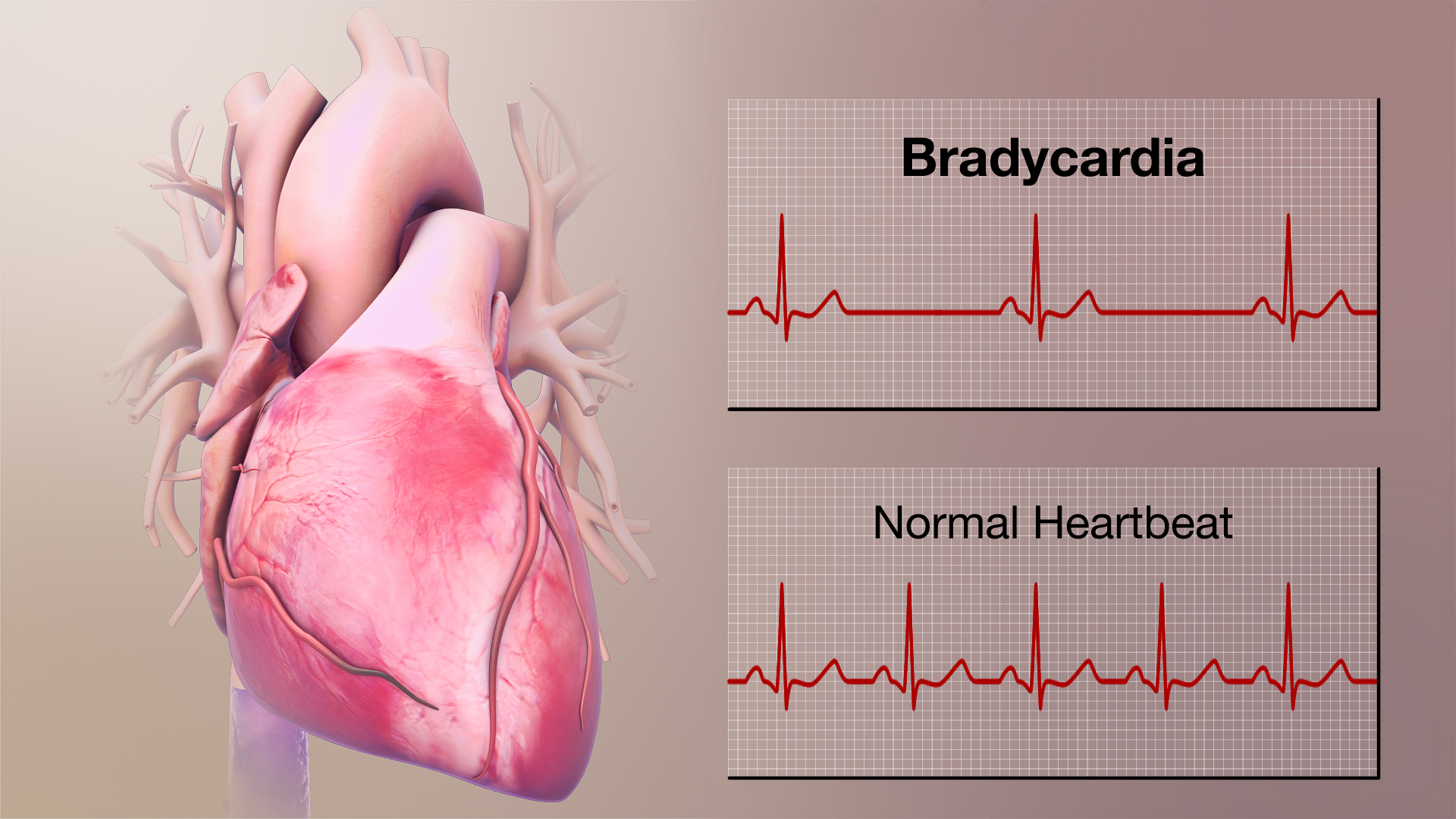Bradycardia is a heart condition in which one’s heart rate is slower than normal. The number of times the heart beats in a minute is called the heart rate and it is a measure of cardiac activity. When the heart rate is between 60 to 100 while at rest, it is considered normal. Heart rate below 60 is considered to be too slow and could cause serious problems in the body because the body does not get enough oxygen-rich blood. However, in some people such as athletes and healthy adults, heart rate below 60 is not considered slow because their heart is strong and does not need to work harder to pump blood.
Electrical signals travel through the four chambers of the heart that tell the heart to beat in a steady rhythm. When these electrical signals slow down or are blocked, the heart either beats faster or beats slower than normal. When it beats slower than normal, it is called bradycardia.

Symptoms
Bradycardia may or may not cause any symptoms. If there are symptoms, the most common ones are:
- Loss of consciousness
- Dizziness
- Weakness
- Shortness of breath
- Confusion
- Pain in the chest
- Difficulty in doing any physical activity
Causes
Like most heart conditions, chances of developing bradycardia increase as one gets older. Besides age, the other factors that can cause bradycardia are:
- Damage to heart tissue because of heart disease or heart attack
- Myocarditis (infection in the heart tissue)
- Congenital heart defect
- Hypothyroidism
- Complication of a heart surgery
- Abnormal heart rhythm because of problems with the sinus node
- Electrical impulses are not able to pass properly from the atria to the ventricles because of problem in the conduction pathways of the heart
- Imbalance of potassium or calcium in the blood
- Disrupted breathing while sleeping because of obstructive sleep apnea
- High blood pressure
- Certain medications such as those used to treat high blood pressure and other heart disorders
- Inflammatory disease such as lupus or rheumatic fever
Treatment
There is no need for treatment of bradycardia if there are no symptoms. For people with symptoms, the treatment will depend upon the cause and severity of the symptoms. If bradycardia is being caused by an underlying condition such as obstructive sleep apnea or hypothyroidism, treating those conditions will cure bradycardia. If bradycardia is being caused due to a certain medication, a change in medication will be required to treat it. If this condition is due to sinus node dysfunction or atrioventricular (AV) node problems, then it can be treated by implanting a pacemaker into the chest. Pacemakers generate the electrical signals to regulate the heartbeat.
One can prevent or reduce the risk of developing bradycardia by reducing the risk of developing heart disease. This can be done by exercising regularly and eating a healthy diet, keeping blood pressure and cholesterol under control, maintaining a healthy weight, drinking alcohol in moderation, not smoking, and managing stress.
Disclaimer: The information in no way constitutes, or should be construed as medical advice. Nor is the above article an endorsement of any research findings discussed in the article an endorsement for any of the source publications.








